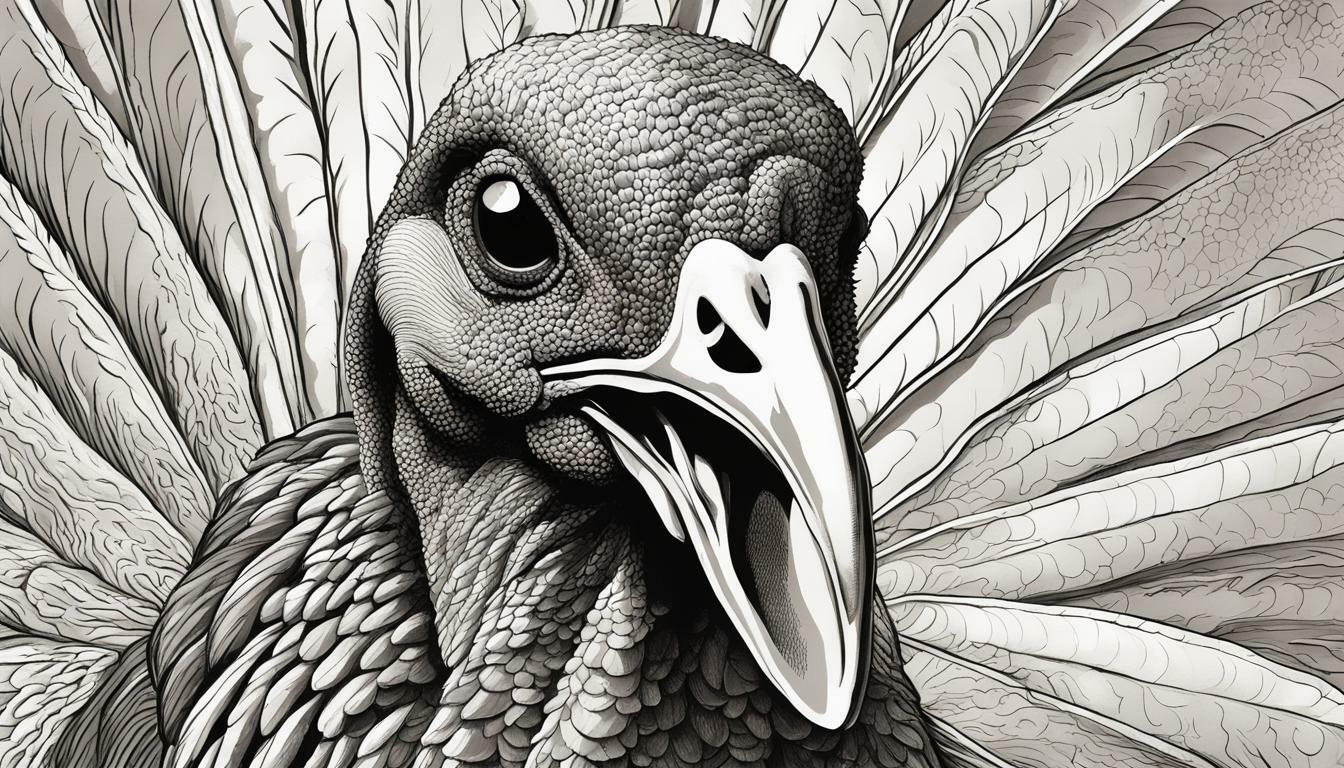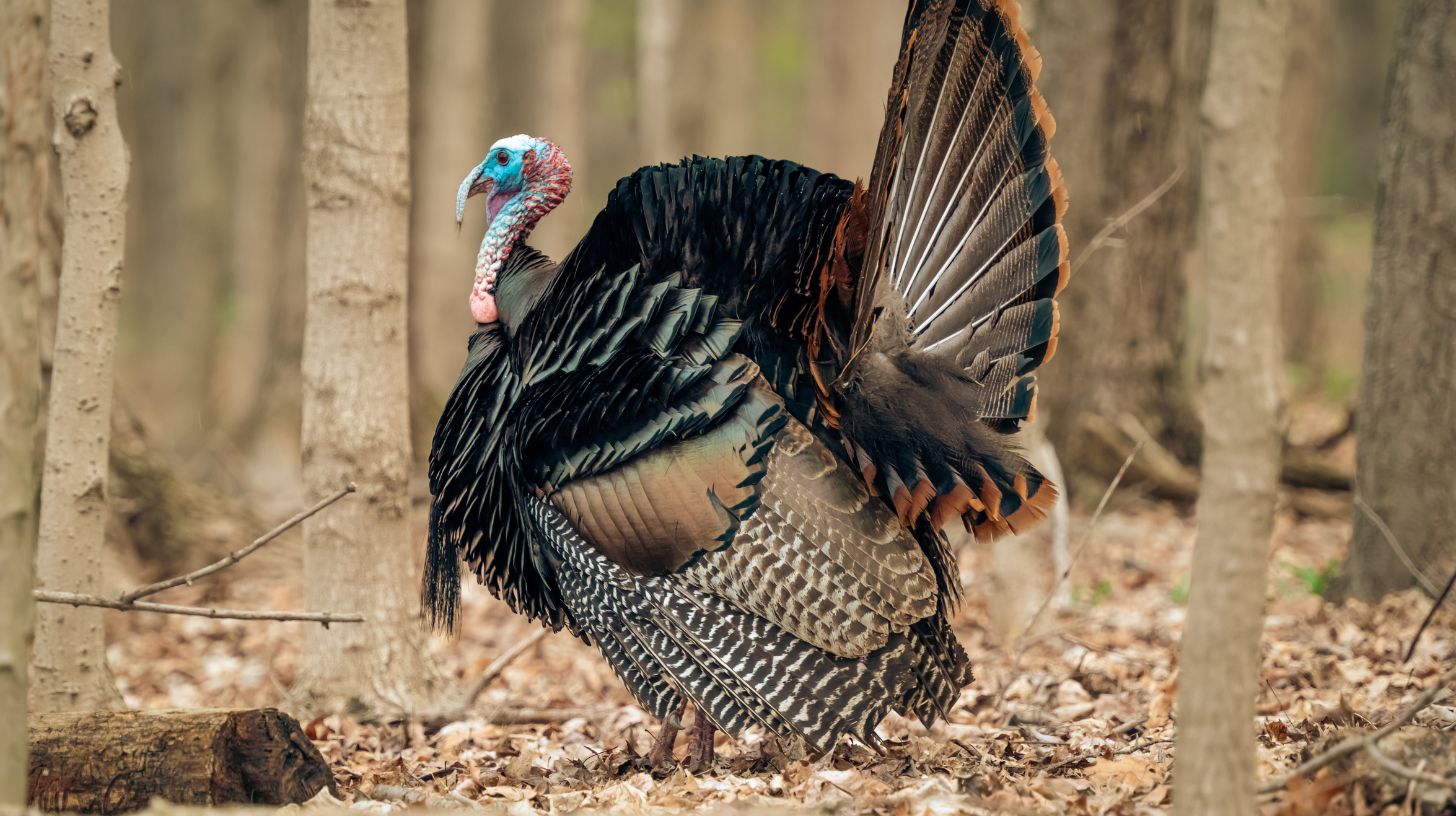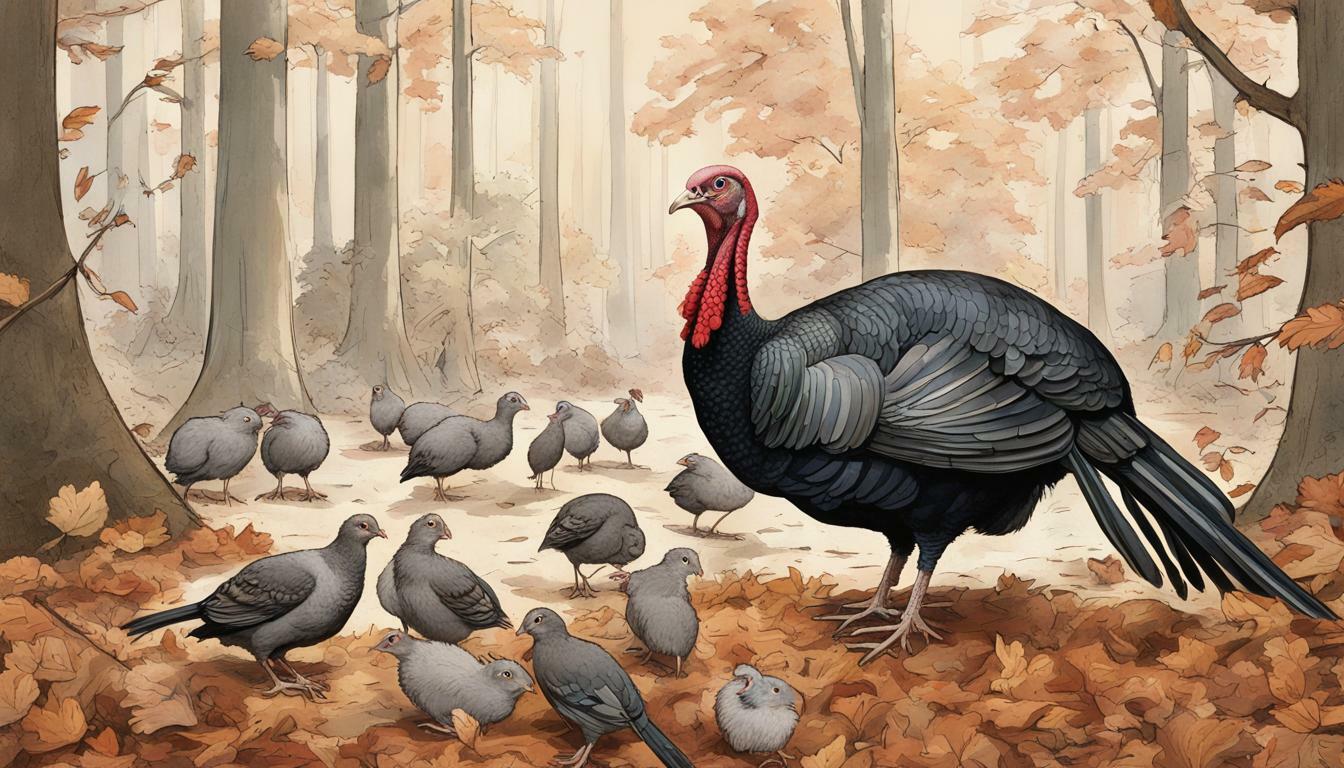Do Turkeys Have Teeth? Uncover the Fascinating Facts!

Daftar isi:
Have you ever wondered if turkeys have teeth? With their characteristic fleshy beaks, it may seem obvious that turkeys lack teeth. But the truth about turkey teeth is more complex than you might think.
In this article, we’ll explore the anatomy behind turkey beaks, look at the evolution of turkey dentition, and learn how turkeys adapted to eat without teeth. Read on to uncover the fascinating facts about turkey teeth!
Turkey Beaks
Turkeys are instantly recognizable by their bright red or bluish heads and the peculiar fleshy growths called caruncles that hang down from their beaks and necks. But when we look inside a turkey’s mouth, we discover something very different from our own toothy smiles.
Turkeys completely lack teeth in their upper and lower jaws. Their beaks consist of sharp bony ridges covered with a tough keratin layer. The upper beak has saw-like serrations along its cutting edges, while the tongue and lower mandible have roughened surfaces as well.
This unique anatomy allows turkeys to skillfully catch and manipulate food in their beaks. The serrated edges function like teeth to tear flesh and enable turkeys to handle even hard foods like nuts and seeds.
So even without teeth, turkeys have specially adapted beaks that serve many of the same functions as teeth do for other animals.
Why Don’t Turkeys Have Teeth?
Given that many other birds and meat-eating animals have teeth, it may seem strange that turkeys completely lack them. But there are good evolutionary reasons why turkeys are toothless.
Firstly, turkeys are primarily herbivores that don’t need teeth for hunting prey or tearing meat. Their natural diet consists of nuts, berries, seeds, and small insects which can easily be handled by their keratin-covered beaks. The fleshy caruncles around their mouth may also help manipulate food.
Secondly, teeth are heavy and turkeys likely lost them to lighten their overall body weight for flight. Their toothless beaks are much lighter while still remaining strong and functional. This adaptation allowed turkeys to develop into agile fliers.
Finally, evidence suggests that early turkey ancestors may have had small, needle-like teeth. But as their diets became more plant-based, the ancestral turkeys evolved to lose their unnecessary teeth altogether. With no selective pressures or eating needs favoring teeth, they gradually disappeared through evolution.
How Turkeys Eat Without Teeth?
Lacking teeth may seem like a big disadvantage, but turkeys have found remarkable ways to consume all types of foods using just their specialized beaks. Here’s how they do it:
- Serrated edges – The sharp upper beak has saw-like serrations that serve a similar purpose to incisors and canines in mammals. Turkeys use these to grasp, tear, and manipulate food.
- Pointed tips – The narrow pointed tips on both the upper and lower beak can pierce food like canine teeth. Turkeys stab their beaks into foods to break them apart.
- Grinding food – Turkeys grind up and mash hard foods like seeds and nuts in their muscular gizzard located in their digestive tract. Their lower beak and tongue help move food into the gullet.
- Catching prey – Turkeys use their strong beaks to snatch up and secure small prey like insects, frogs, or lizards. The hooked upper beak tip helps grip slippery animals.
- Cutting plant matter – For vegetation and fruits, turkeys snip off pieces using the scissor-like cutting action of their upper and lower mandibles.
So while turkeys eat very differently from us toothy humans, their unique beaks allow them to effectively consume a diverse diet.
What Do Turkeys Use Instead of Teeth?
Turkeys have adapted some special anatomical structures in their beaks and tongues that allow them to eat such a varied diet without teeth:
- Tomia – The sharp cutting edges along the upper beak act like incisors to bite off food.
- Mandibular salients – Bony protrusions on the lower jaw help anchor food. They align with the tomia to function like molars during chewing.
- Serrated edges – The upper mandible has saw-like serrations that tear meat and other tough foods.
- Narial Leaflet – A fleshy structure over the nostrils helps turkeys grip food and move it deeper into the mouth.
- Tongue – The tongue has spiny projections pointed backward to help move food into the throat. The surface helps turkeys grind up food.
- Hard palate – The rigid roof of the mouth assists in manipulating food using the tongue.
So while turkeys have no literal teeth, the anatomy of their beaks and mouths allows them to fully substitute for teeth in grasping, tearing, cutting, and chewing food!
Do Baby Turkeys Have Teeth?
You might be wondering if baby turkeys or poults have teeth that they lose as they grow up. But just like adult turkeys, poults completely lack teeth even at a young age.
Poults hatch out with the same characteristic toothless beak as adult turkeys, though on a smaller scale. The hard egg tooth protruding from their upper beak helps the poult chip away at the shell from inside to hatch. But this falls off soon after.
Young poults use their tiny but specialized beaks to start pecking at food immediately. Their beaks have miniature serrated edges and salients to help them grasp tiny food items. Baby turkeys rely heavily on their mother to pre-digest food for them in the early weeks, swallowing regurgitated food from her crop.
Within 4-6 weeks, poults develop enough to forage on their own using their fully functional beaks. So while cute and tiny, even baby turkeys never need teeth to eat thanks to their uniquely adapted anatomy!
Did Turkeys Ever Have Teeth?
Given their current toothless state, it may be hard to imagine turkeys with a mouth full of teeth. But ancestrally, turkeys did actually have teeth!
The earliest fossil turkeys from 30-40 million years ago had small conical teeth protruding from their jaws. These early Odontopteryx species likely used their teeth to grip prey like insects, amphibians, reptiles, and small mammals.
But as turkeys evolved a more herbivorous diet, selective pressures led to the gradual loss of teeth. Smaller teeth and fewer teeth slowly disappeared over millions of years.
By the time the first Meleagris turkeys appeared 10 million years ago, they were essentially toothless. These Miocene era ancestors of today’s wild turkeys had the same toothless beaks we see now.
So while ancestral turkeys possessed teeth, the modern species evolved to lose them altogether. This allowed them to develop keratin-covered beaks optimized for pecking, tearing, and chewing toothlessly!
The Surprising Truth About Turkey Teeth
When we lift up a turkey’s beak expecting to see teeth, we’re instead met with a smooth surface punctuated by sharp ridges and serrations. Turkeys are essentially toothless!
But we now understand that this was not always the case. Early turkey ancestors did possess small teeth before evolving to lose them over millions of years.
Instead, modern turkeys developed strong yet lightweight beaks, perfectly adapted to grasp, crush, and swallow their food without any need for true teeth. Serrated edges and bony protrusions allow the upper and lower mandible to entirely substitute for teeth.
So the surprising truth is that turkeys have been thriving for eons without teeth! Their specialized toothless beaks and tongues enable them to effectively eat a diverse diet just as well as any toothy jawed animal.
While their toothless grins may look unusual to us, turkeys show how successful beaks can be. They prove teeth are not mandatory for active feeding across a wide range of foods.
Turkeys perfectly exemplify how evolution can lead to innovative anatomical solutions just as well-adapted as teeth, or even better. The old saying about horses being given teeth shouldn’t apply to turkeys – their toothless beaks serve them perfectly!
So next Thanksgiving when you sit down to eat turkey, take a moment to appreciate the marvelous adaptation behind their ingenious toothless mouths!
Final Thoughts on Do Turkeys Have Teeth?
In this exploration of turkey teeth, we uncovered some fascinating truths:
- Turkeys completely lack teeth in their upper and lower beaks. They have serrated edges and ridges instead.
- As herbivores, turkeys evolved to lose unnecessary teeth and lighten their bodies for flight.
- Specialized beak anatomy allows turkeys to grasp, tear, and grind food all without teeth.
- Turkey ancestors did have small teeth that disappeared over millions of years of evolution.
- Baby poults hatch toothless and use their specialized beaks to eat.
- Turkeys prove that diverse toothless mouths can be just as successful for eating!
So while our human smiles require teeth, turkeys show how enameled beaks can be an equally effective adaptation. Their unique mouths remind us of nature’s boundless ability to creatively solve challenges like toothless dining!
Next time you eat turkey, remember how well-adapted their toothless beaks are. Evolution works in marvelous ways!
Welcome. I’m Adreena Shanum, the proud owner of this website, and I am incredibly passionate about animals, especially poultry. I founded adreenapets.com as a labor of love, stemming from my desire to share my knowledge and experiences with poultry enthusiasts worldwide.




